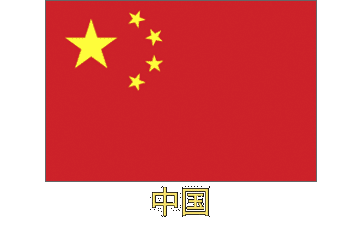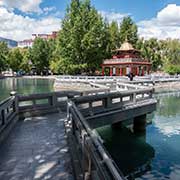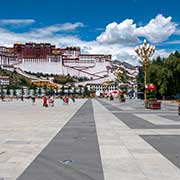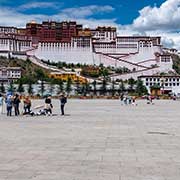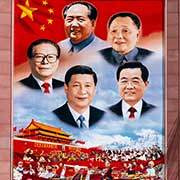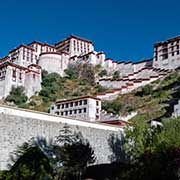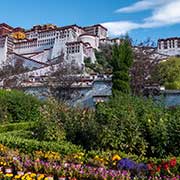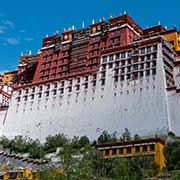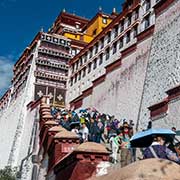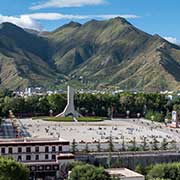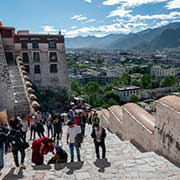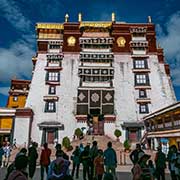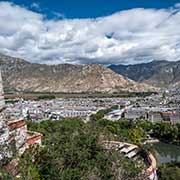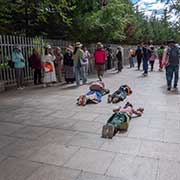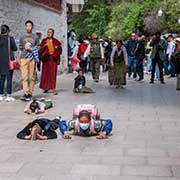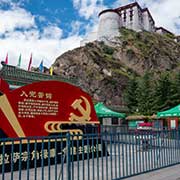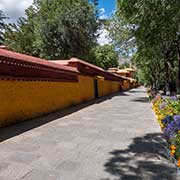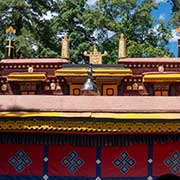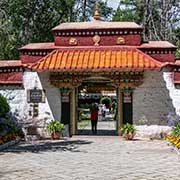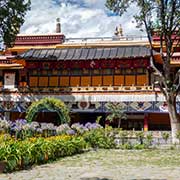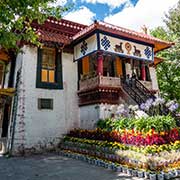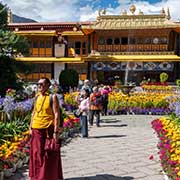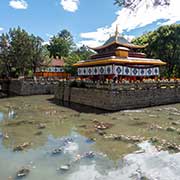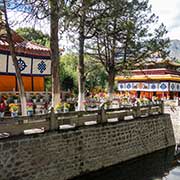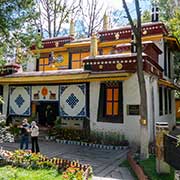Photos of the Potala and Norbulinka Palaces, Lhasa, Tibet
The Potala and Norbulinka Palaces, Lhasa
The Potala Palace, a “dzong” fortress in Lhasa, was the winter palace of the Dalai Lamas from 1649 to 1959 when the 14th Dalai Lama had to flee from there. The 5th Dalai Lama started its construction in 1645 as a seat of government, situated between the large Drepung and Sera monasteries. It is on the site of an earlier fortress built in 637 by Songtsen Gampo, the leader of the Tibetan Empire, who had moved his capital here.
you may then send it as a postcard if you wish.
The Potala is a massive building, measuring 400 metres from east to west and 350 metres from north to south. Its sloping stone walls average three metres thick, five metres thick at the base. It soars 117 metres on top of Marpo Ri, the “Red Hill”, with thirteen storeys, containing over 1,000 rooms, 10,000 shrines and about 200,000 statues. The Potala rises more than 300 metres above the valley floor. The central part of the building is called the “red palace” because of its crimson colour, containing the principal halls, chapels, and shrines of past Dalai Lamas and terminating in gilt canopies.
The palace suffered damage during the Tibetan uprising in 1959 when Chinese shells were launched into the palace’s windows. Still, it escaped severe damage during the Cultural Revolution in 1966 through the personal intervention of Zhou Enlai, the Premier of the PRC at the time. Even so, it was reported that “many store rooms for housing precious objects, handicrafts, paintings, wall hangings, statues, and ancient armour were almost robbed empty”.
The Norbulingka (“Jeweled Garden”) is a palace and surrounding park about 3 kilometres west of the Potala Palace in Lhasa. It served as the traditional summer residence of successive Dalai Lamas from the 1780s until the 14th Dalai Lama’s exile in 1959. It was built starting in 1755, but most of the structures that still stand today were commissioned by the 13th and 14th Dalai Lamas. It has about 374 rooms, distributed over several small palaces, with lakes, flower gardens and fruit trees. In the past, there were peacocks and other wildlife.
The Norbulingka complex suffered extensive damage from bombardments in 1959 and during the Cultural Revolution, but in 2001, the Central Committee of the Chinese Government decided to restore the complex; that year, UNESCO inscribed it as a World Heritage Site together with the Potala Palace. Restoration work began in 2003 and since then festivals are held here again. When the Dalai Lamas reigned, they moved each year between the Potala and Norbulinka; this happened in a spectacular, elaborate festive procession.


